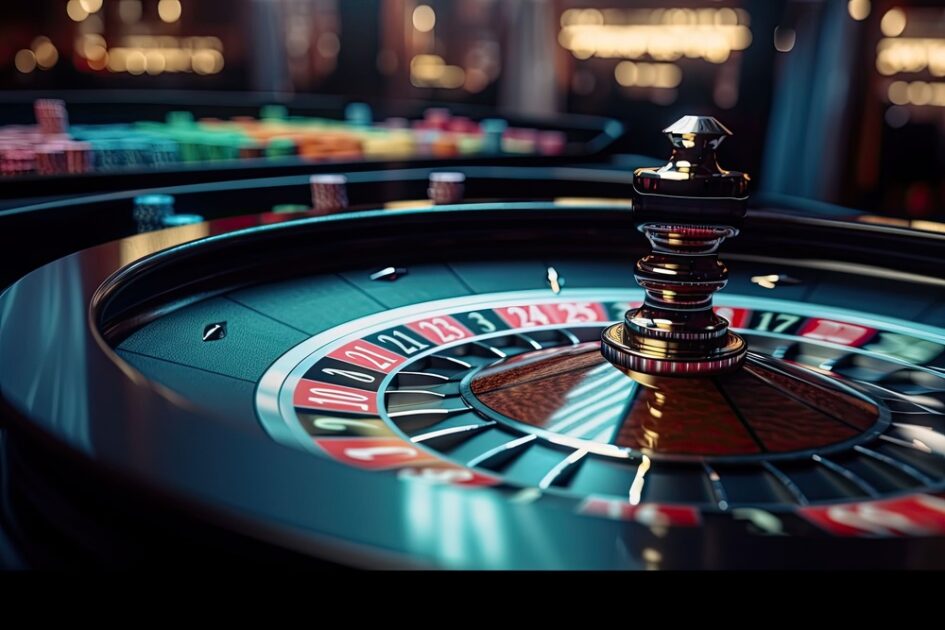Slot machine design incorporates various psychological principles to encourage extended play and repeated visits.
The visual and auditory stimuli in casinos, including flashing lights and celebratory sounds, are strategically implemented to create an engaging environment. These elements are designed to activate reward centers in the brain, similar to the effects of certain addictive substances.
The technology behind slot machines employs specific reward schedules, such as variable ratio reinforcement, which provides unpredictable rewards.
This unpredictability can lead to persistent play, as users anticipate potential wins. Near-misses, where the outcome is close to a win, are programmed to occur more frequently than by chance, fostering a false sense of skill and encouraging continued play.
The machines’ audiovisual feedback is calibrated to distort time perception, often making sessions seem shorter than they actually are.
This effect, combined with the absence of clocks and natural light in many casinos, can lead to extended gambling periods.
The “one more try” phenomenon is a result of the intermittent reinforcement schedule and the cognitive bias known as the gambler’s fallacy, where players incorrectly believe that past outcomes influence future results.
This misconception can lead to prolonged gambling sessions as players chase losses or attempt to capitalize on perceived “hot streaks.”
Understanding these psychological mechanisms is crucial for both responsible gambling practices and regulatory oversight of the gaming industry.
Visual and Audio Stimuli
Slot machines employ a combination of visual and auditory elements to maintain player engagement. The design of these elements is deliberate, with teams of specialists developing specific color schemes, sounds, and animations to optimize player attention and interaction.
The visual components of slot machines typically feature high-contrast, bright colors. Research in color psychology suggests that certain hues, particularly reds and yellows, can elicit feelings of excitement and energy.
These colors are prominently used in slot machine interfaces to potentially influence player mood and behavior.
Audio elements play a significant role in the slot machine experience. Common sounds include simulated coin drops, victory melodies, and reel spinning noises. These auditory cues are designed to provide feedback and reinforce player actions, potentially contributing to a more immersive gaming experience.
Flashing lights serve multiple functions in slot machine design. They act as indicators for wins or specific game events and create a sense of constant activity.
This dynamic visual environment may help maintain player interest and engagement over extended periods.
The combination of these sensory stimuli creates a multifaceted gaming environment. While the effectiveness of these design elements in influencing player behavior varies among individuals, they represent a calculated approach to game design in the casino industry.
It is important to note that while these design elements may enhance the gaming experience for some, they can also contribute to problematic gambling behaviors in susceptible individuals. Responsible gaming practices and awareness of these design techniques are crucial for informed decision-making in casino environments.
Reward Scheduling Effects
Reward schedules in slot machines are designed to maintain player engagement by controlling the frequency and type of payouts. These systems influence player expectations and behavior, encouraging continued play.
The patterns of rewards in slot machines aren’t random but carefully calculated.
Players typically experience a combination of small, frequent wins interspersed with occasional larger payouts. This structure aims to sustain interest and create the perception that a significant win is imminent.
The reward scheme, known as a variable ratio schedule, is effective in promoting habitual play due to its intermittent and unpredictable nature.
From an objective standpoint, the slot machine system is engineered to prolong gameplay.
It creates scenarios where players may feel a substantial win is within reach, potentially motivating them to continue playing. Every aspect of the slot machine, including game mechanics and reward schedules, is designed to maintain player engagement and encourage spending.
Research has shown that these reward systems can have a significant impact on player behavior.
A study published in the Journal of Gambling Studies (Dixon et al., 2014) found that players tend to overestimate their winnings and underestimate their losses, partly due to the effects of these reward schedules.
It is important for players to be aware of these mechanisms and to approach gambling with a clear understanding of the odds and potential risks involved.
Responsible gambling practices and awareness of these psychological techniques can help individuals make more informed decisions about their gaming activities.
Color Psychology in Design
Color psychology plays a significant role in slot machine design, influencing player behavior and perception.
Designers employ specific color choices to evoke particular emotional and psychological responses. Bright colors, such as red and yellow, are commonly used to stimulate alertness and create a sense of excitement. These hues are associated with increased mental arousal and can potentially lead to quicker decision-making.
Cooler tones like blue and green are often incorporated into areas where prolonged play is expected. These colors are generally linked to feelings of calmness and relaxation, which may encourage players to remain at the machine for extended periods.
The lighting and color contrasts in slot machines can also affect time perception.
Casinos frequently utilize fluorescent backlights to create a visually stimulating environment. This lighting technique may contribute to players losing track of time, as it can mask natural light cues and create a constant, artificial atmosphere.
It is important to note that while these color psychology principles are applied in slot machine design, individual responses to colors can vary based on personal experiences and cultural backgrounds.
Additionally, the effectiveness of these design strategies in influencing player behavior may differ among individuals and should be considered alongside other factors that impact gambling habits.
Near-Miss Programming
Near-miss programming in slot machines is a psychological strategy designed to maintain player engagement. This technique presents combinations that are close to winning, often lacking only one symbol for a successful outcome.
The intention is to create a perception of imminent success, encouraging continued play.
The programming of these near-miss scenarios is deliberate and based on algorithms designed to enhance the game’s appeal.
This approach exploits the brain’s reward system, triggering a response similar to that of an actual win. The resulting endorphin release can motivate players to persist in their gaming activity.
Research in gambling psychology suggests that near-misses can foster an illusion of control or skill in players.
This perception may lead individuals to believe that they can influence the game’s outcome, despite its random nature. Such beliefs can contribute to prolonged engagement with the machine.
The neurological impact of near-miss experiences in gambling has been compared to addictive behaviors associated with substance use.
The activation of reward circuits in the brain during these events can potentially lead to problematic gambling patterns if not managed responsibly.
It is important to note that while near-miss programming is an effective tool for maintaining player interest, it doesn’t alter the fundamental randomness of slot machine outcomes.
The house edge and overall probability of winning remain unchanged by these psychological techniques.
Time Perception in Casinos
Casinos employ various strategies to influence patrons’ perception of time, potentially leading to extended play and increased spending. One notable tactic is the deliberate absence of windows and clocks within the gaming area.
This design choice aims to disconnect visitors from external time cues, potentially causing them to lose track of hours spent gambling.
The casino environment is carefully constructed to maintain a consistent atmosphere regardless of the time of day.
Constant lighting levels and a steady ambiance contribute to a sense of timelessness, focusing patrons’ attention solely on their gaming activities.
Auditory elements also play a role in this sensory manipulation.
The continuous sounds of slot machines, background music, and other casino noises create an immersive environment that can further detach patrons from external time awareness.
Research has shown that these environmental factors can indeed affect time perception and decision-making.
A study published in the Journal of Gambling Studies (2014) found that participants in a windowless environment with no clocks showed poorer time estimation abilities compared to those in a room with windows and visible clocks.
While these strategies may be effective in extending gaming sessions, it’s important to note that they raise ethical concerns regarding responsible gambling practices.
Regulators and responsible gaming advocates have called for measures to counteract these tactics, such as mandatory time displays on gaming machines and regular announcements of the current time in casino spaces.
Player Engagement Techniques
Casinos employ various strategies to maintain player engagement and extend playing time. The design of slot machines is intentional, with specific features aimed at attracting and retaining players.
These include visual and auditory cues, as well as ergonomic seating for prolonged comfort.
Progressive jackpots serve as a significant attraction, encouraging continued play through the prospect of substantial winnings. Free spin bonuses are strategically implemented to balance frequency and perceived value, maintaining player interest.
Player loyalty programs, typically utilizing tracking cards, record gaming activity and duration. These systems offer incentives such as complimentary meals or accommodations, which may influence players to extend their casino visits.
The physical layout of slot machines, often arranged in complex patterns, can make navigation challenging, potentially increasing time spent in gaming areas.
These combined elements create an environment designed to maximize player engagement and time spent in the casino. While these techniques can be effective, it’s important for players to be aware of these strategies and make informed decisions about their gaming activities.
Also, check out our article about Enhancing Player Engagement at Casinos
Ethical Considerations
The psychological strategies employed in slot machine design raise significant ethical concerns.
These machines are programmed to engage users through various stimuli and reward patterns, potentially exploiting cognitive biases and emotional vulnerabilities.
Key ethical considerations include:
-
Impact on vulnerable populations: Individuals with predispositions to addictive behaviors may be disproportionately affected by slot machine design elements.
-
Informed consent: Questions arise regarding whether players fully understand the mechanisms and true odds of winning when engaging with these machines.
-
Transparency: The operational details of slot machines are often not clearly communicated to users, which may be seen as ethically problematic.
-
Exploitation for profit: The intentional use of psychological tactics to encourage continued play and spending raises ethical questions about the balance between business interests and user well-being.
-
Regulatory oversight: The extent and effectiveness of regulations governing slot machine design and operation vary across jurisdictions, potentially impacting consumer protection.
-
Long-term societal impact: The widespread availability and design of slot machines may contribute to broader social issues related to gambling addiction and financial instability.
These ethical considerations necessitate ongoing dialogue among stakeholders, including game designers, regulators, mental health professionals, and consumers, to address the balance between entertainment and potential harm in slot machine design and implementation.
Conclusion
As you explore the mesmerizing world of slot machines, it’s crucial to recognize how their design psychologically hooks you. The blend of vibrant colors, enticing sounds, and clever reward tactics are all engineered to keep you playing longer. Be mindful of these strategies, from near-misses to time distortions, designed to skew your perception of luck and time. Staying aware can help you enjoy responsibly, ensuring that your entertainment doesn’t turn into a psychological trap.

